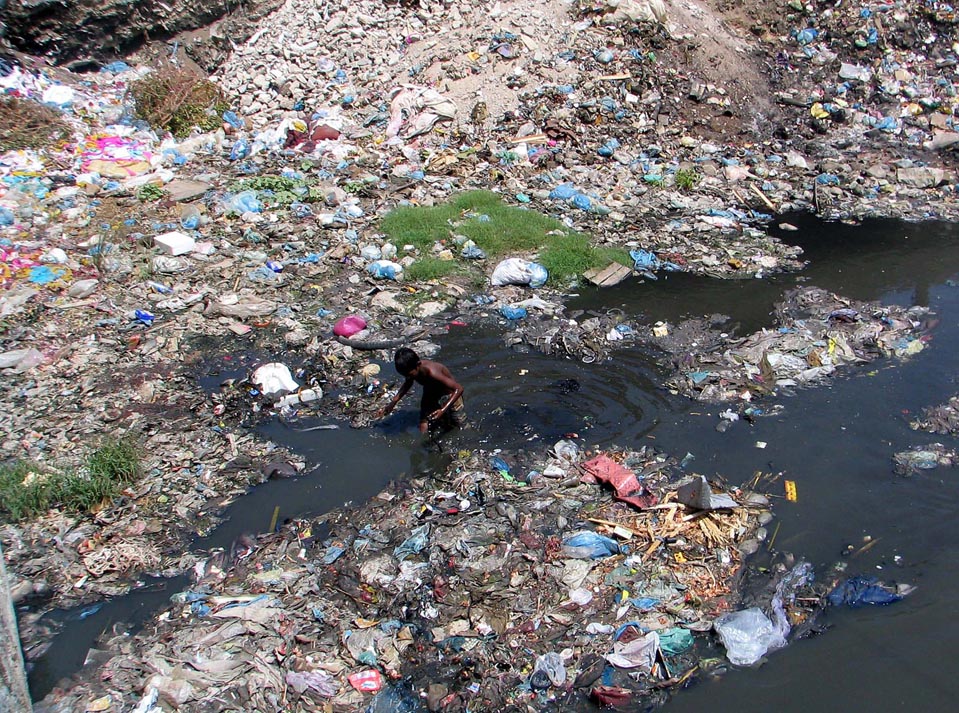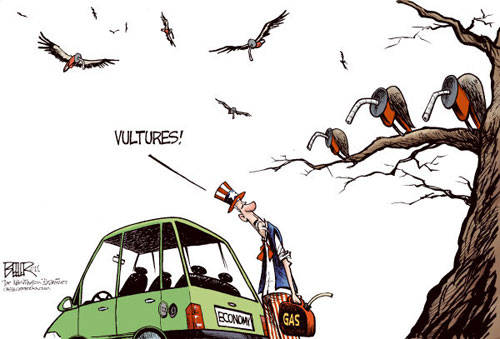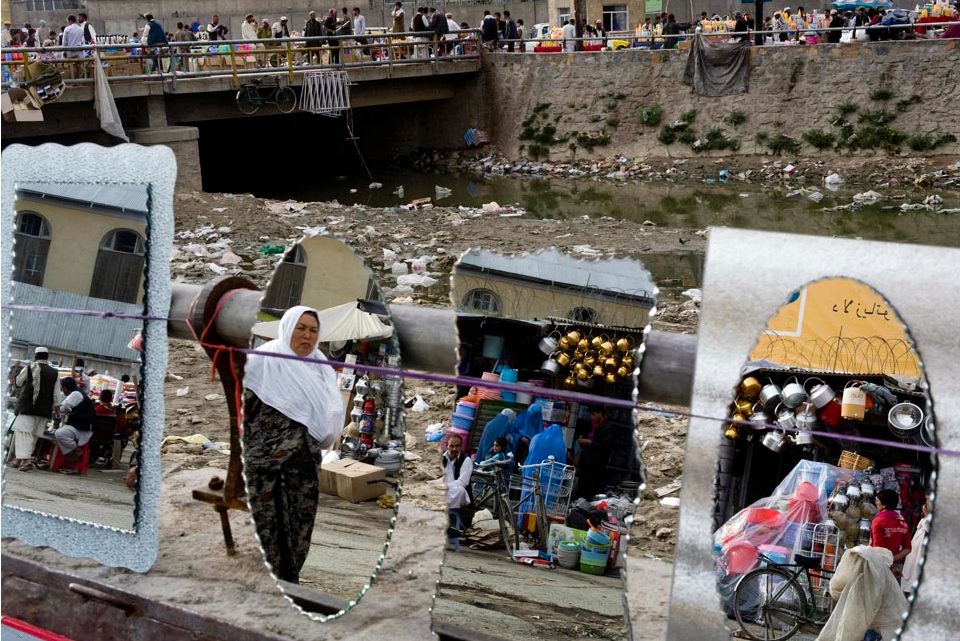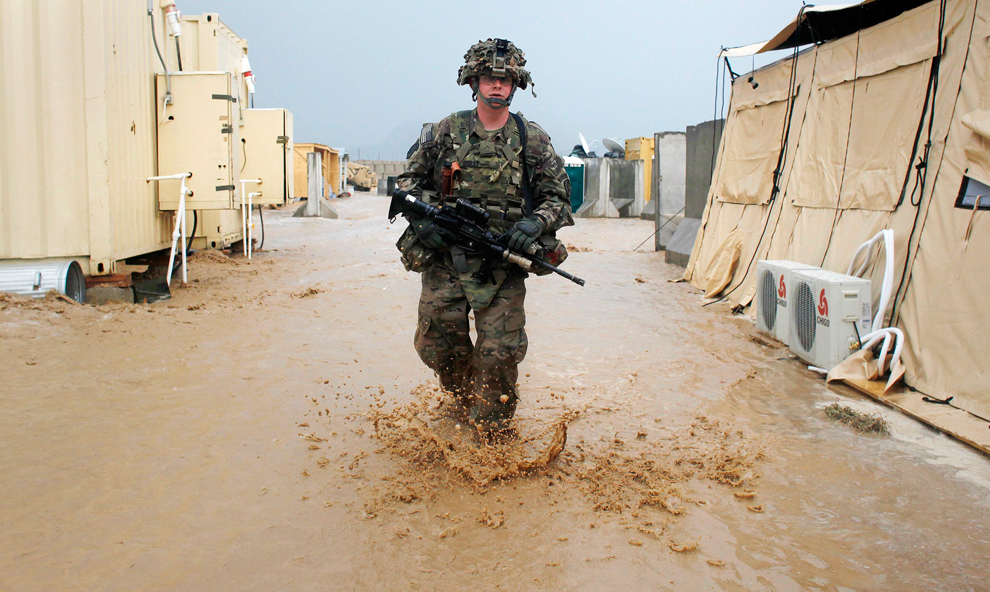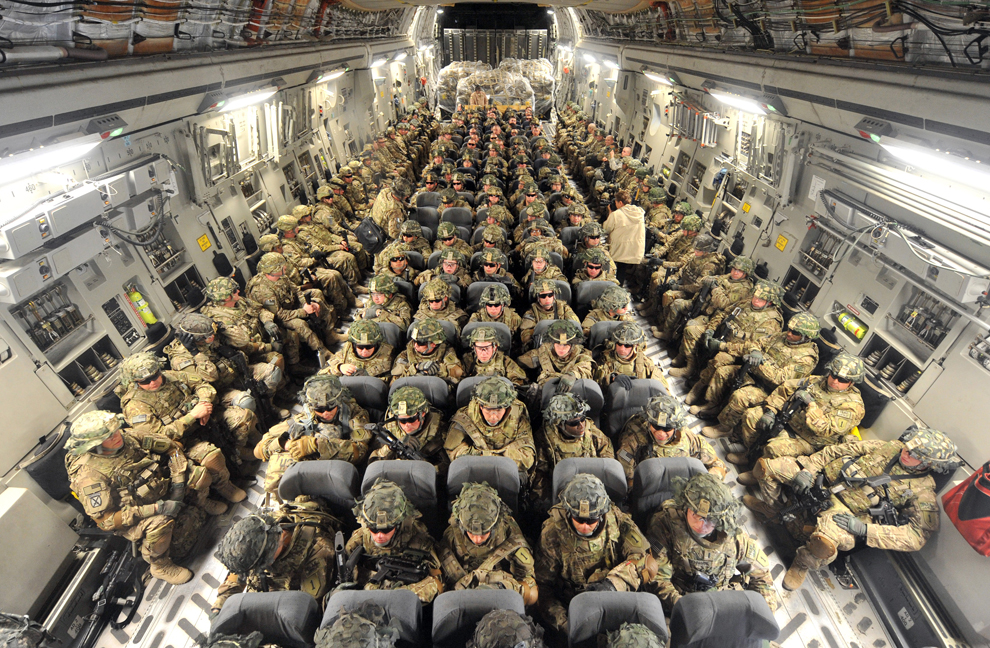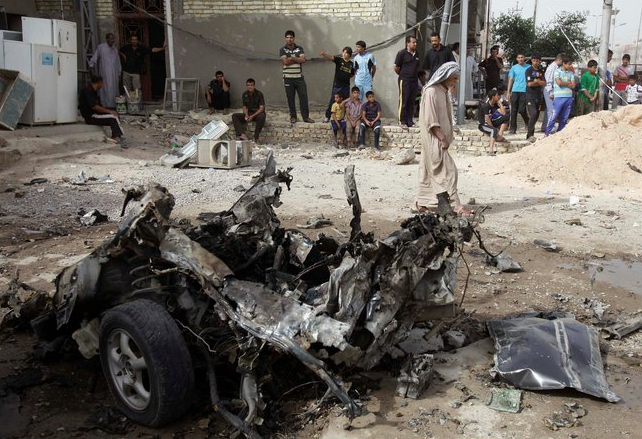
The photograph above appeared on the front page of the NYT a few days ago in conjunction with a story concerning a series of bomb blasts that rocked Baghdad killing twenty people, including 8 Iraqi policemen and two U.S. soldiers. At first glance, the image is altogether banal. The remnants of the wreckage in the foreground are barely recognizable, with only a single tire giving a clue as to its identity as a vehicle. The absence of security personnel or emergency vehicles make it apparent that the explosion did not just happen. And the individuals sitting and standing in the background are altogether relaxed, if not nonchalant, their attention dispersed in multiple directions, making it difficult to know what event the photograph is actually recording—the scene in front of us, whatever is outside of the frame of the image, or something else altogether. Indeed, on the face of things the photograph does not appear to be an image of anything in particular at all.
At second glance, however, it may well be the very banality of the image that makes it especially worthy of our attention. An explosion has taken place, or more specifically, as the caption directs the reader, “a series of attacks” have taken place, and yet any sense of urgency in dealing with the situation is altogether elided. Everyday life has been disrupted, to be sure, tragically so with the violent loss of life, but the event is shown to be so routine, so commonplace, that its status as a horrifying emergency claim goes unnoticed and unaddressed. The photograph thus purports to be the visual representation of a slice of life in a society that has become conditioned to such everyday violence, so much so that it lives, in Ariella Azoulay’s terms, “on the verge of catastrophe.” This is not an appeal to the now tired idea of “compassion fatigue,” which claims that we become so weary of images of violence and disaster that we simply stop noticing. Rather, it suggests the sense in which “the contours [of the scene represented] are indistinct; one could easily fail to notice it, passing in front of it without stopping.” It is portrayed as a nonevent, however quotidian it might be, and thus it never rises to the level of an emergency claim. Put simply, the everydayness of the scene, which should alert us to the profound, catastrophic condition of the society, actually veils—if not altogether erases—the tragedy before our eyes.
To get the point, compare the photograph above with the photograph and slide show that the NYT published in conjunction with the 2008 bombing of a U.S. Army recruiting station in Times Square.
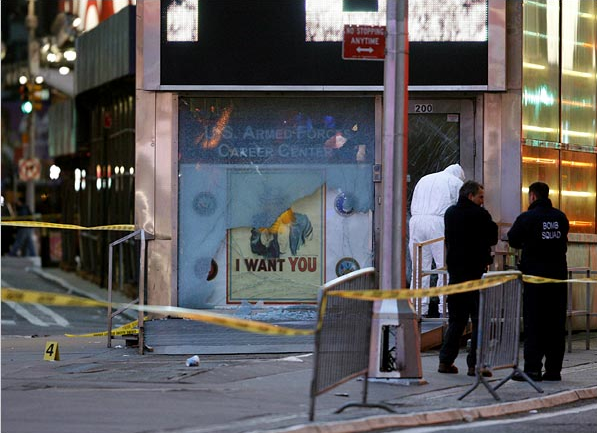
No one was injured in this blast, the physical damage to the building was relatively minor, and disruption to the city lasted for only a few hours, but nevertheless, all of the signs of urgency and emergency are present and pronounced. Yellow tape marks the scene as the site of a dangerous criminal act. Members of the bomb squad—state officials—stand post in front of what appears to be a technical expert dressed in a hazardous materials suit as he examines the bomb’s residue. And note too that the explosion took place in the early morning hours and the street lamps in the background are still on, suggesting the immediacy with which the event was responded to and handled. Everything in the image casts this as a special event and in so doing initiates the conditions for classifying it as a catastrophe.
The point, of course, is that catastrophes come in a variety of forms. The problem is not in reducing the conditions for defining a catastrophe to a singular event, but in how we visualize those conditions as a matter of urgency.
Photo Credits: Karim Kadim/AP; Chip East/Reuters. And with special credit to Ariella Azoulay’s The Civil Contract of Photography (New York: Zone Books, 2008). Esp. 289-373.
7 Comments

